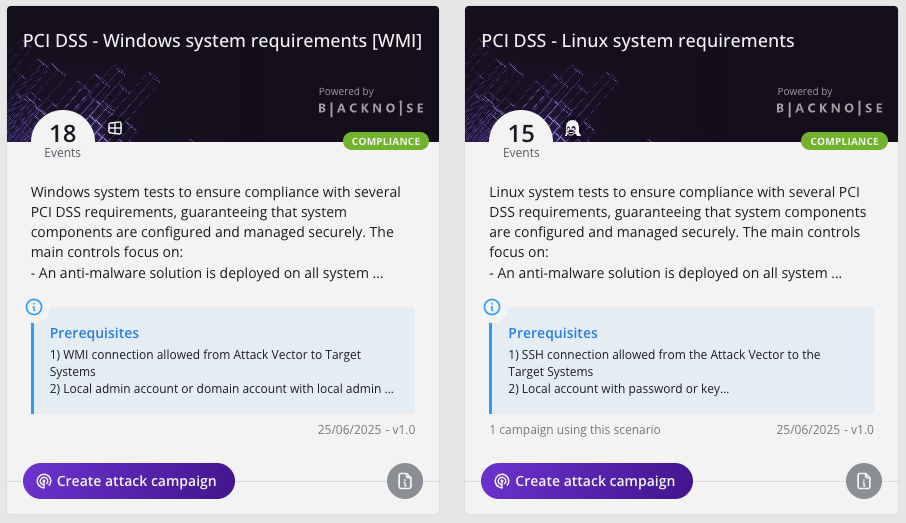Validation of Technical Requirements
Attack simulations play a crucial role in validating the security controls required by PCI DSS, allowing for the verification that the mechanisms in place effectively work to protect payment card data. By reproducing realistic intrusion scenarios, companies can verify their compliance with over 20 key controls from the framework. Among these, we can mention:
- Unauthorized Connection Detection: Simulations validate detection of unauthorized connections to and from the card data environment (CDE).
- Anti-Malware Testing: Effectiveness of anti-malware solutions is tested through continuous behavioral analysis.
- Audit Log Generation: Simulations help identify suspicious activity through the generation and exploitation of audit logs.
- Incident Response Validation: Exercises verify systems’ ability to detect, alert, and respond to critical control failures or network intrusions.
This active validation provides tangible assurance of compliance and operational resilience of the security system.
Documentation and Compliance
Attack simulations also play a key role in compliance and documenting an organization’s security efforts. They provide tangible evidence that active measures are being implemented to comply with the requirements of the PCI DSS standard. This documentation is essential to demonstrate to auditors and stakeholders the organization’s commitment to protecting payment card data. Additionally, it facilitates the audit process by offering concrete evidence of testing and continuous improvements of security controls. Finally, this proactive approach enhances the trust of customers and partners by showing that the organization takes the security of sensitive data seriously.
Training and Preparedness
Finally, regular training and drills for personnel responsible for security incident response are essential to maintain a robust security posture. By ensuring that these teams are appropriately and periodically trained and tested in incident response, organizations can guarantee a quick and effective reaction to potential threats. This includes observing incident response processes to verify that monitoring and alert responses from security monitoring systems are well covered in the security incident response plan. By simulating various incident scenarios, personnel can gain hands-on experience, improving their ability to identify, analyze, and mitigate security incidents effectively. Moreover, these exercises allow for updating and refining response procedures, ensuring that the organization remains prepared for the constantly evolving cyber threats.
Ensure compliance with BlackNoise scenarios
The BlackNoise platform offers attack scenarios to validate compliance with PCI DSS requirements, focusing on:
- Restricting network access to the cardholder data environment.
- Detecting and responding to network intrusions.
- Capturing audit logs of invalid access attempts to identify anomalies.
- Deploying anti-malware solutions for continuous behavioral analysis.
- Retaining and reviewing audit logs for the anti-malware solution.
- Protecting audit log files from unauthorized modifications.
- Promptly detecting and responding to failures of critical security controls.
Here are some examples of scenarios available in the application:

Download the report below


